Previous Day - Next Day
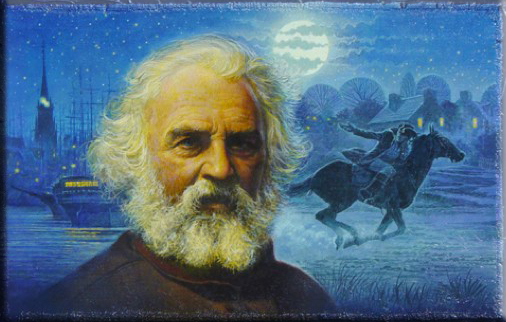
“It takes less time to do things right than to explain why you did it wrong.”
~ Henry W. Longfellow
Wikiquote (Henry Wadsworth Longfellow (February 27, 1807 – March 24, 1882) an American poet and educator whose works include "Paul Revere's Ride", The Song of Hiawatha, and Evangeline. He was also the first American to translate Dante Alighieri's The Divine Comedy and was one of the five Fireside Poets.

March 28th, 37
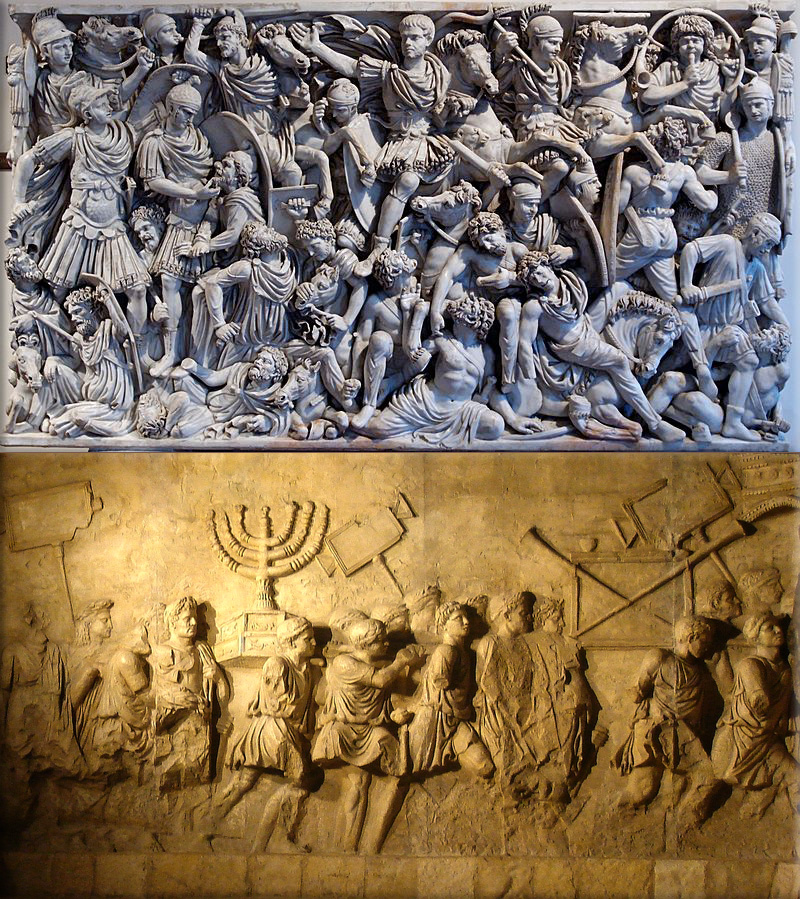
Roman Empire:
37 - Roman Emperor Caligula accepts the titles of the Principate, entitled to him by the Senate.
193 - Roman Emperor Pertinax is assassinated by Praetorian Guards, who then sells the throne in an auction to Didius Julianus.
364 - Roman Emperor Valentinian I appoints his brother Flavius Valens co-emperor.
Wikipedia Image: Relief from a 3rd-century sarcophagus depicting a battle between Romans and Germanic warriors; the central figure is perhaps the emperor Hostilian / Depiction of the Menorah on the Arch of Titus in Rome.
March 28th, 845
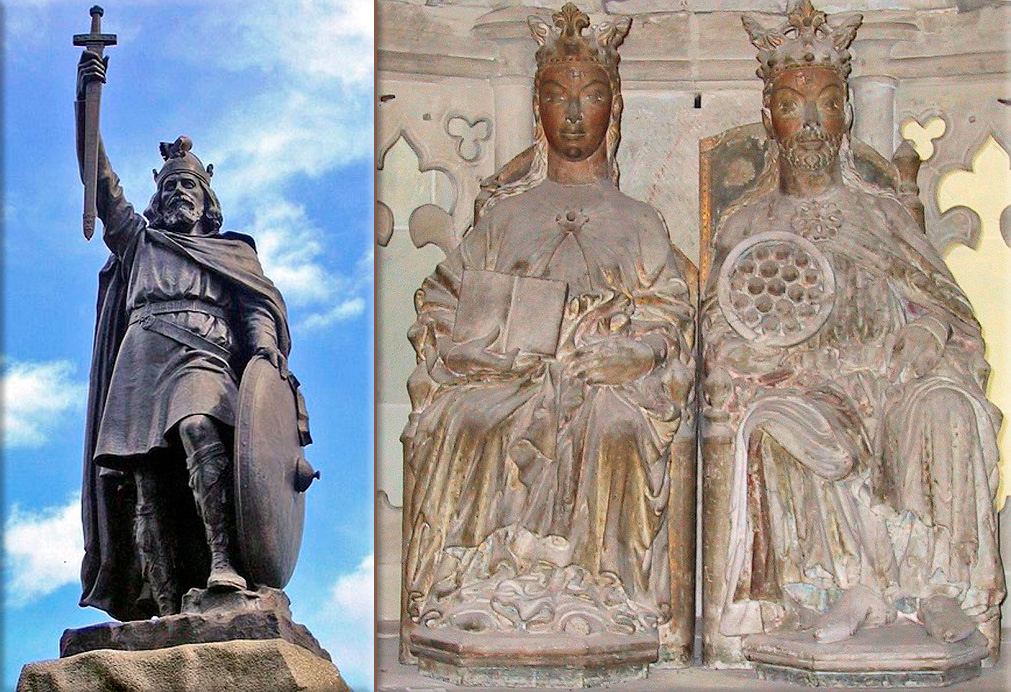

Paris is sacked by Viking raiders, probably under Ragnar Lodbrok, who collects a huge ransom in exchange for leaving.
Wikipedia Image: Alfred the Great; Alfred the Great's granddaughter, Eadgyth - a Saxon Queen and one of the oldest members of the English royal family were unearthed in a tomb in Germany.
British archaeologists looking for evidence of prehistoric activity in the English county of Dorset discovered instead a mass grave holding 54 male skeletons. Smithsonian, Hurstwic.org.
March 28th, 1204
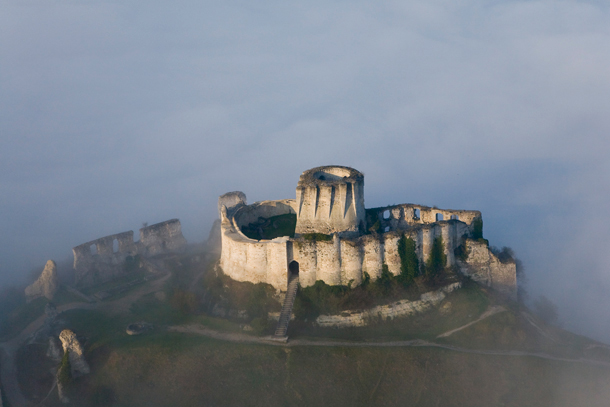
Siege of Château Gaillard: Ends in a French victory over King John of England, who loses control of Normandy to King Philip II Augustus.
Wikipedia Photo: Château Gaillard - Les-Andelys © Francis Cormon.
March 28th, 1776

Juan Bautista de Anza finds the site for the Presidio of San Francisco.
Wikipedia Photo: San Francisco de Asis; San Francisco, Alamo Square Victorian houses; San Francisco Gloden Gate Bridge; San Francisco Skyline.
March 28th, 1795
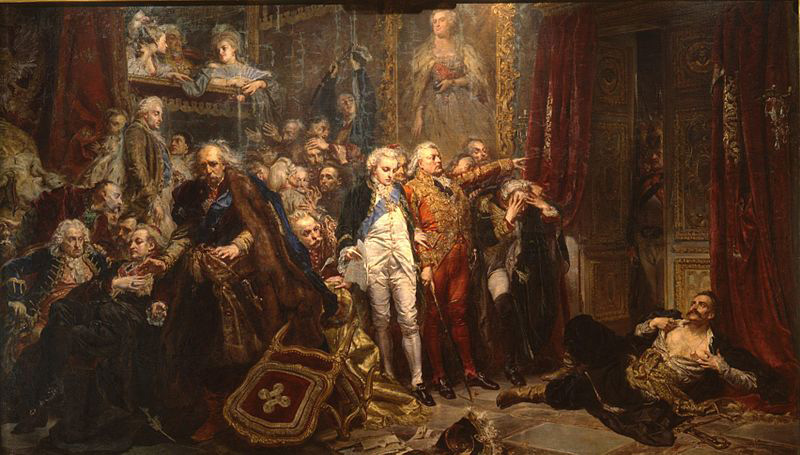
Partitions of Poland: the Duchy of Courland and Semigallia, a northern fief of the Polish-Lithuanian Commonwealth, ceases to exist and becomes part of Russia.
Wikipedia Painting: Rejtan - The Fall of Poland, oil on canvas by Jan Matejko, 1866, 282 x 487 cm, Royal Castle in Warsaw.
March 28th, 1809

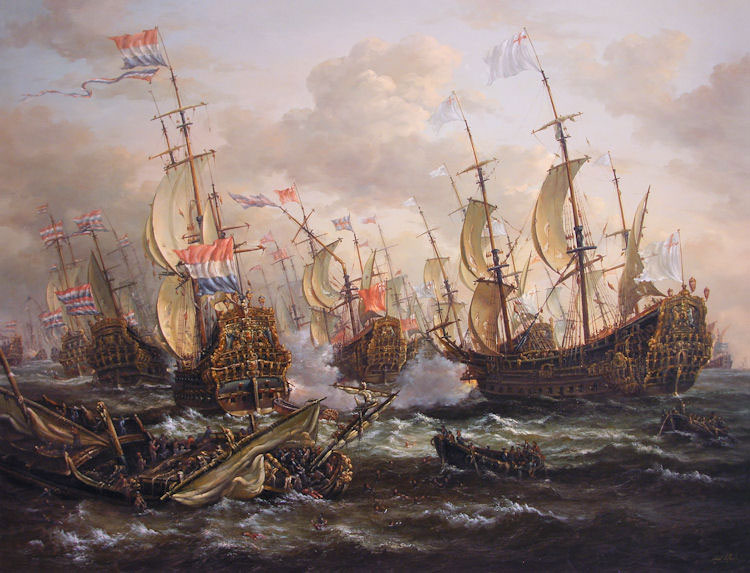
French Revolutionary Wars / Napoleonic Wars:
1809 - Peninsular War; Battle of Medelin; France defeats Spain.
Wikipedia Painting: Battle of Trafalgar: The British HMS Sandwich fires to the French flagship Bucentaure (completely dismasted) in the battle of Trafalgar;
Napoleon in Berlin (Meynier). After defeating Prussian forces at Jena, the French Army entered Berlin on 27 October 1806;
Battle of the Bridge of Arcole Napoleon Bonaparte leading his troops over the bridge of Arcole, by Horace Vernet;
Napoleon as King of Italy (Appiani);
Napoleon Crossing the Alps (David). In 1800 Bonaparte took the French Army across the Alps, eventually defeating the Austrians at Marengo;
Charge of the Russian Imperial Guard cavalry against French cuirassiers at the Battle of Friedland, 14 June 1807;
Battle of Borodino as depicted by Louis Lejeune. The battle was the largest and bloodiest single-day action of the Napoleonic Wars;
Napoleon's withdrawal from Russia, a painting by Adolph Northen;
Wellington at Waterloo by Robert Alexander Hillingford;
Napoleon is often represented in his green colonel uniform of the Chasseur à Cheval, with a large bicorne and a hand-in-waistcoat gesture.
Battle of the Nile (Battle of Aboukir Bay).
March 28th, 1854
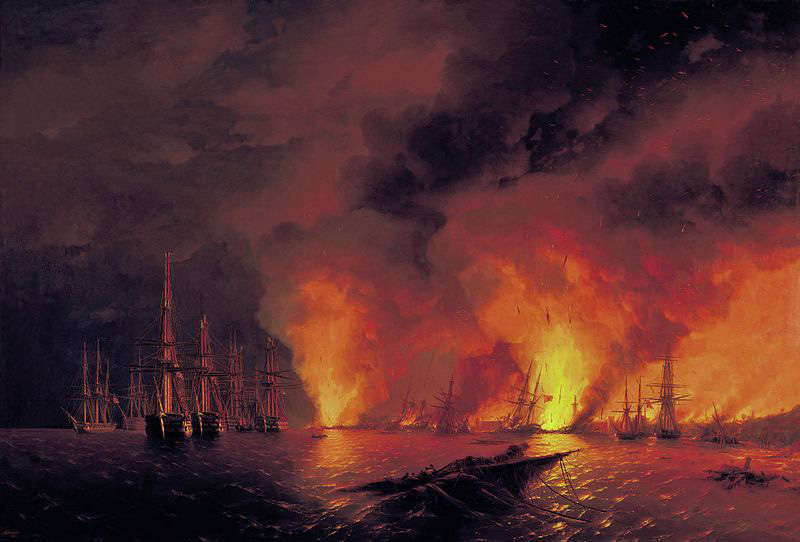
Crimean War: France and Britain declares war on Russia.
Wikipedia Painting: Crimean War; Battle of Sinop, by Ivan Aivazovsky.
March 28th, 1860
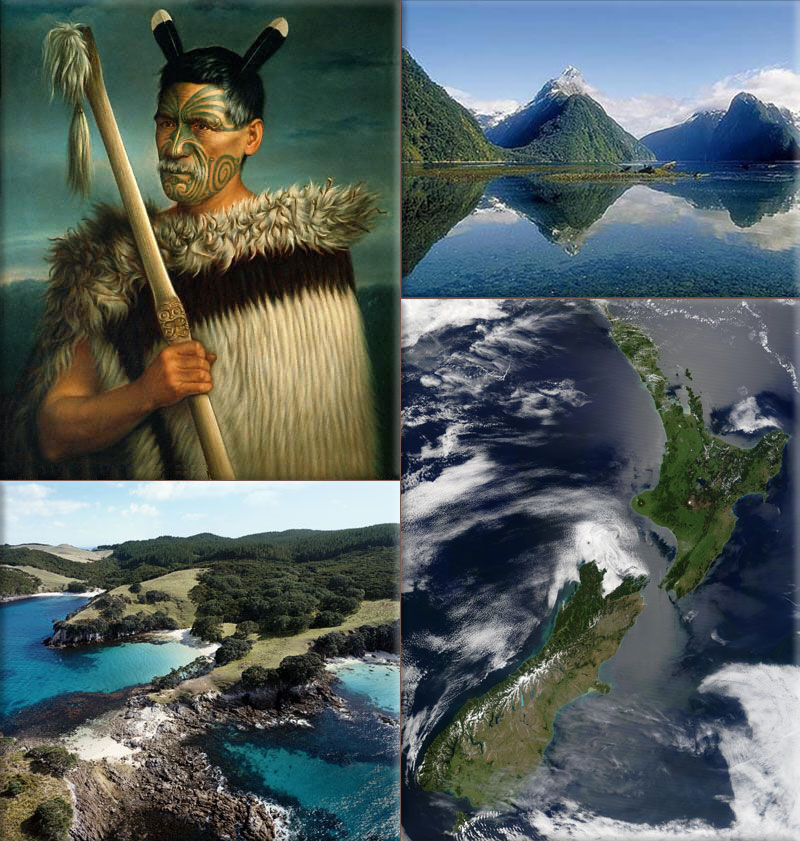
New Zealand land wars: Taranaki War; The Battle of Waireka begins.
Wikipedia Image: Rewi Manga Maniapoto (died 1894) was a Waikato chief who led Maori forces during the British Invasion of Waikato during the New Zealand Wars; Satellite image of New Zealand, NASA's Visible Earth; Bay of Islands.
March 28th, 1862

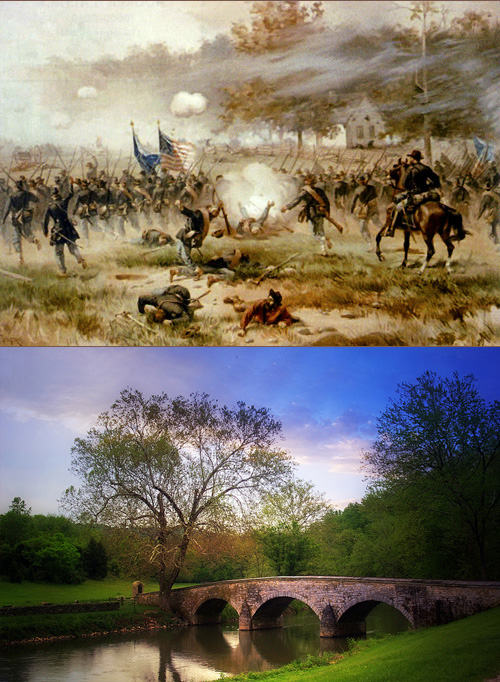
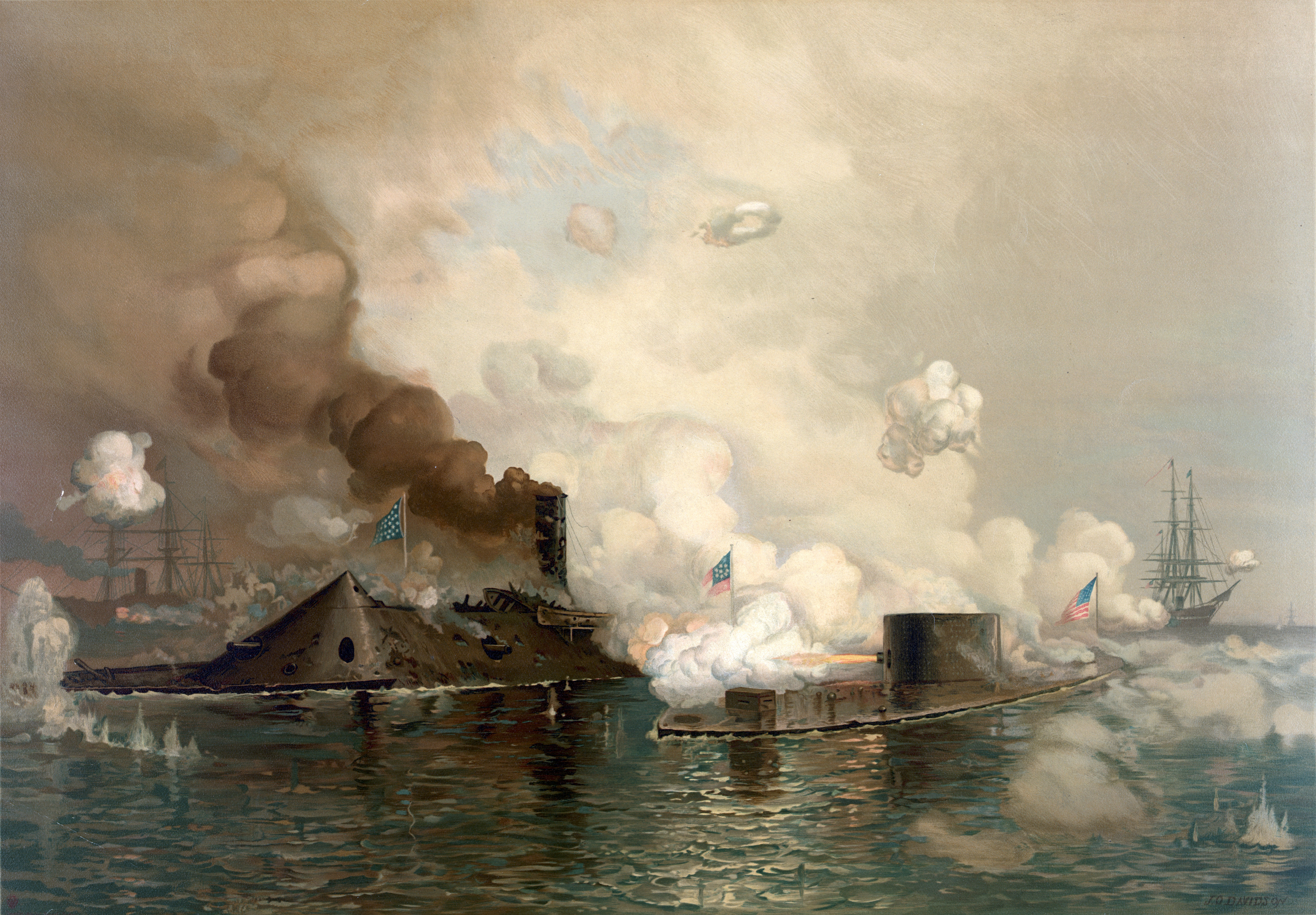
American Civil War:
1862 - Battle of Glorieta Pass; In New Mexico, Union forces stop the Confederate invasion of New Mexico territory. (The battle began on March 26.)
Wikipedia Image: ● Lincoln Memorial; an American national monument built to honor the 16th President of the United States, Abraham Lincoln - located on the National Mall in Washington, D.C. across from the Washington Monument.
● The northern army led by George McClellan and the southern army led by Robert E. Lee met at Antietam Creek, Maryland in September, 1862. It was a bloody battle where 13,000 Confederates and 12,000 Union troops died in just one day. McClellan had hesitated to attack before the battle thus letting the southern troops regroup. Also, he had saved reserves and refused to use them at the end of the battle thinking that Lee was holding reserves for a counterattack, even though those reserves didn't exist. The Union victory stopped Lee's northward advance and was a turning point in the war.
● Battle of Antietam / Stone Bridge at Antietam Battlefield - Sharpsburg, Maryland
● First Battle Between Ironclads: CSS Virginia/Merrimac (left) vs. USS Monitor, in 1862 at the Battle of Hampton Roads.
● Although photography was still in its infancy, war correspondents produced thousands of images, bringing the harsh realities of the frontlines to those on the home front in a new and visceral way. The Atlantic.
March 28th, 1920
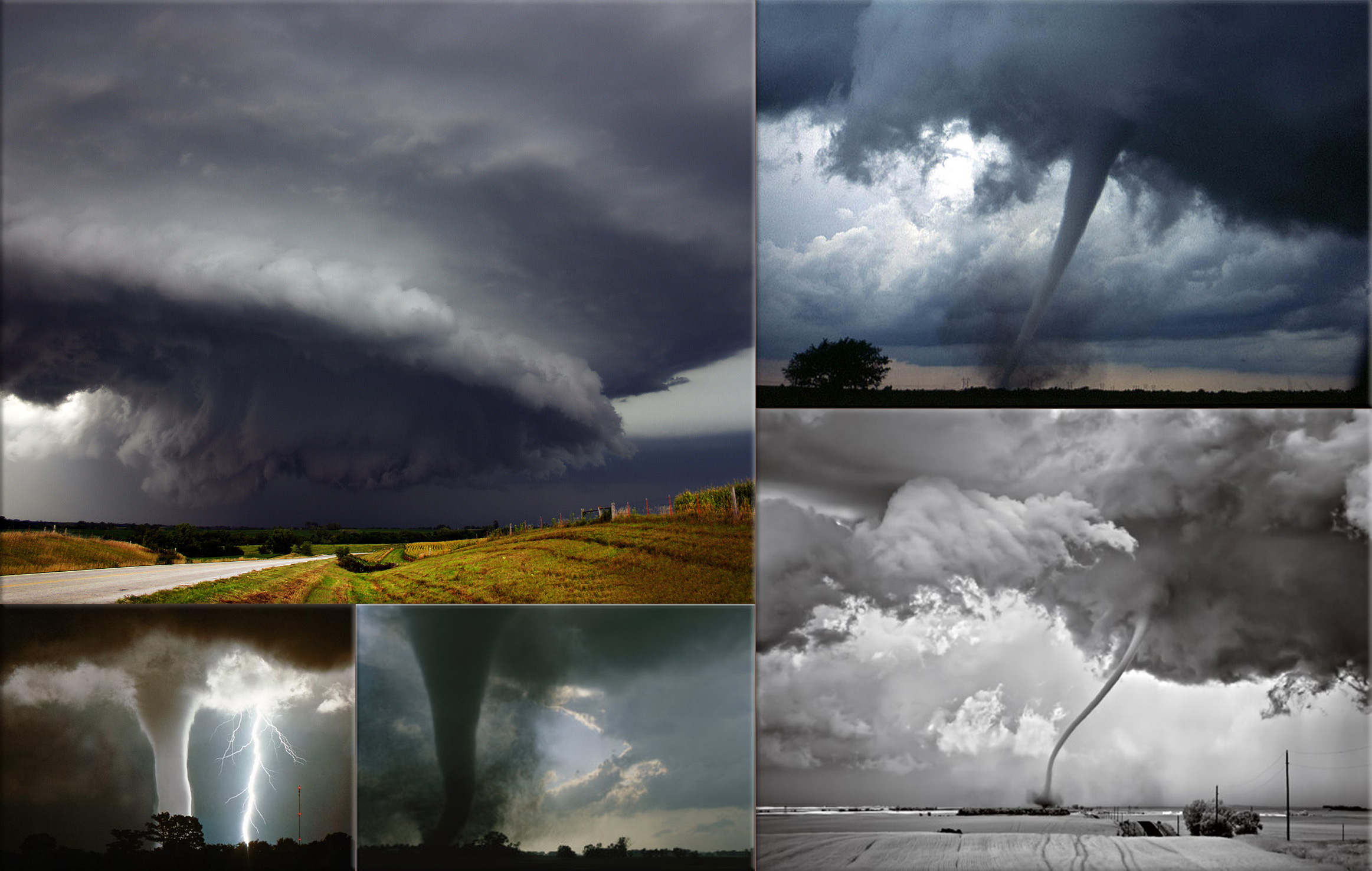
Tornadoes:
1920 - Palm Sunday tornado outbreak of 1920; affects the Great Lakes region and Deep South states.
Wikipedia Photo: Weather Front System; Tornado near Anadarko, Oklahoma; North Dakota Tornado; F3 Category Tornado Swirls Across A South Dakota Prairie by Carsten Peter; A waterspout parallels a lightning strike over Lake Okeechobee in Florida, by Fred K. Smith, National Geographics, Extream Instability.
March 28th, 1930
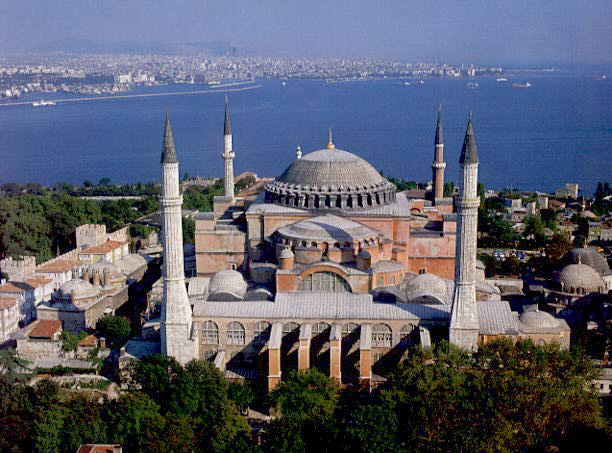
Constantinople and Angora change their names to Istanbul and Ankara.
Wikipedia Photo: Constantinople: Hagia Sophia can be a former Orthodox patriarchal basilica, later a mosque, and today a museum in Istanbul, Turkey
March 28th, 1939
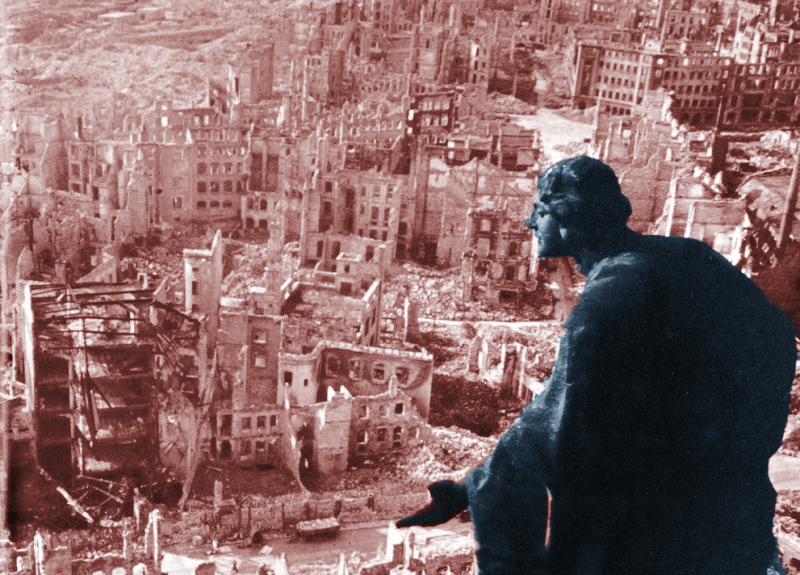

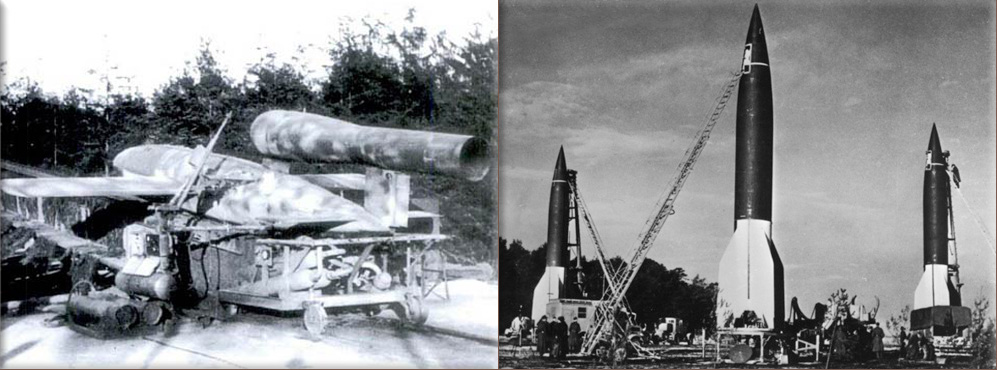
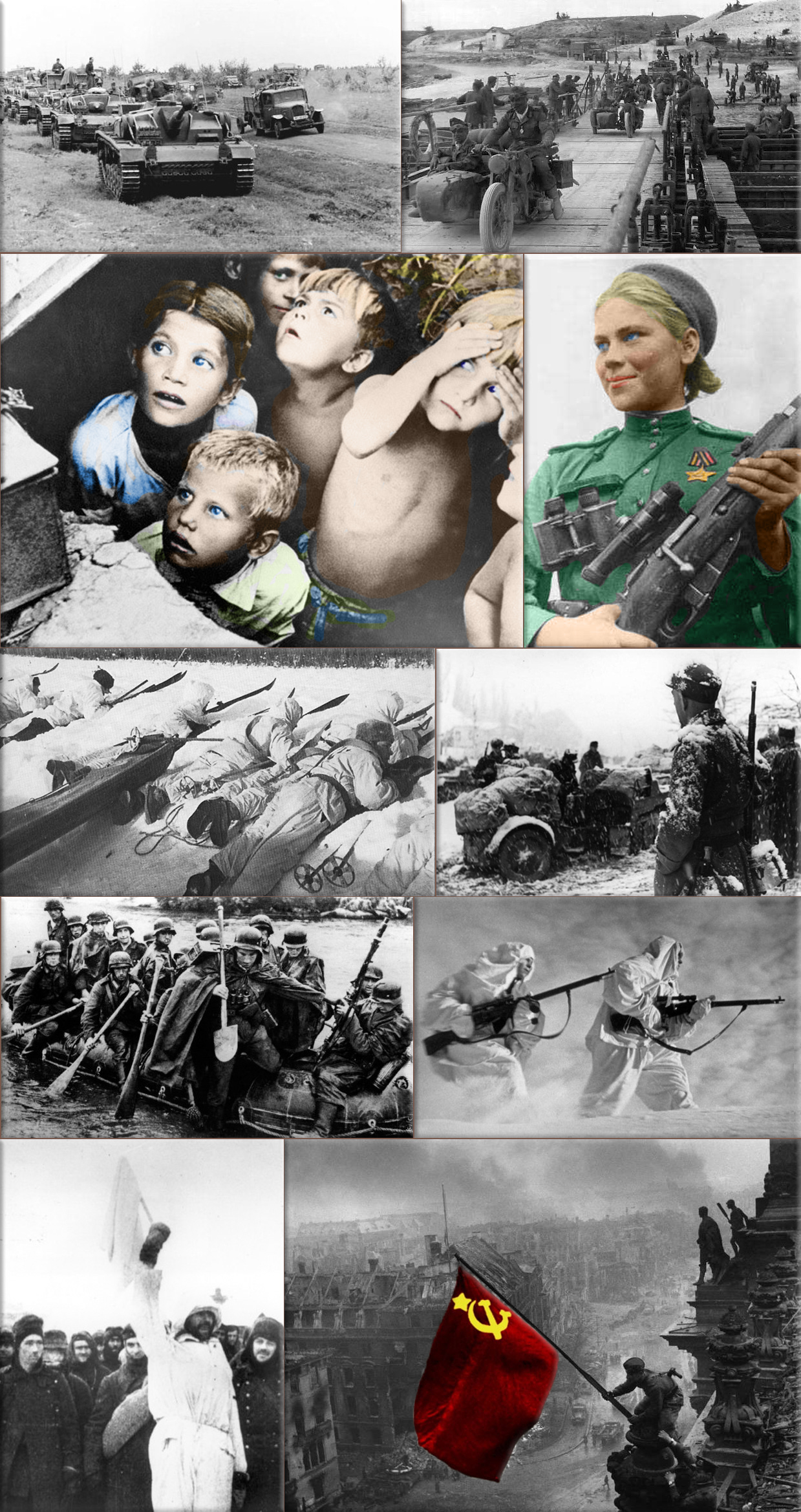
World War II:
1939 - Spanish Civil War; Siege of Madrid - Generalissimo Francisco Franco conquers Madrid after a three-year siege.
1941 - Battle of Cape Matapan; In the Mediterranean Sea, British Admiral Andrew Browne Cunningham leads the Royal Navy in the destruction of three major Italian heavy cruisers and two destroyers.
1942 - Saint Nazaire Raid; In occupied France, British naval forces successfully raid the German-occupied port of Saint Nazaire.
Wikipedia Photo: Bombing of Dresden in World War II; August Schreitmüller's sculpture 'Goodness' surveys Dresden after a firestorm started by Allied bombers in 1945.
USS Bunker Hill was hit by kamikazes piloted by Ensign Kiyoshi Ogawa and another airman on 11 May 1945. 389 personnel were killed or missing from a crew of 2,600; Ensign Kiyoshi Ogawa, who flew his aircraft into the USS Bunker Hill during a Kamikaze mission on 11 May 1945; Kamikaze Missions - Lt Yoshinori Yamaguchi's Yokosuka D4Y3 (Type 33 Suisei) "Judy" in a suicide dive against USS Essex. The dive brakes are extended and the non-self-sealing port wing tank is trailing fuel vapor and/or smoke 25 November 1944.
German V1 flying-bomb and V2 Rockets - Preparations for a Salvo Launch of V-2 Rockets in the Heidelager near Blizna (Poland) (1944), credit German History in Documents and Images GHDI.
Eastern Front (World War II); Germans race towards Stalingrad. August 1942; Soviet children during a German air raid in the first days of the war, June 1941, by RIA Novosti archive; Soviet sniper Roza Shanina in 1944. About 400,000 Soviet women served in front-line duty units Caucasus Mountains, winter 1942/43; Finnish ski patrol: the invisible enemy of the Soviet Army with an unlimited supply of skis; Men of the German Engineers Corps cross a river which is swollen after the first autumn rains, to strengthen bridges linking the German positions on the central front in Russia. by Keystone / Getty Images. October 1942; Russian snipers fighting on the Leningrad front during a blizzard. Photo by Hulton Archive / Getty Images, 1943; German soldiers surrendering to the Russians in Stalingrad, the soldier holding the white flag of surrender is dressed in white so that there could be no doubt of his intentions, a Russian soldier is on the right of the photograph. by Keystone / Getty Images, January 1943.
March 28th, 1946
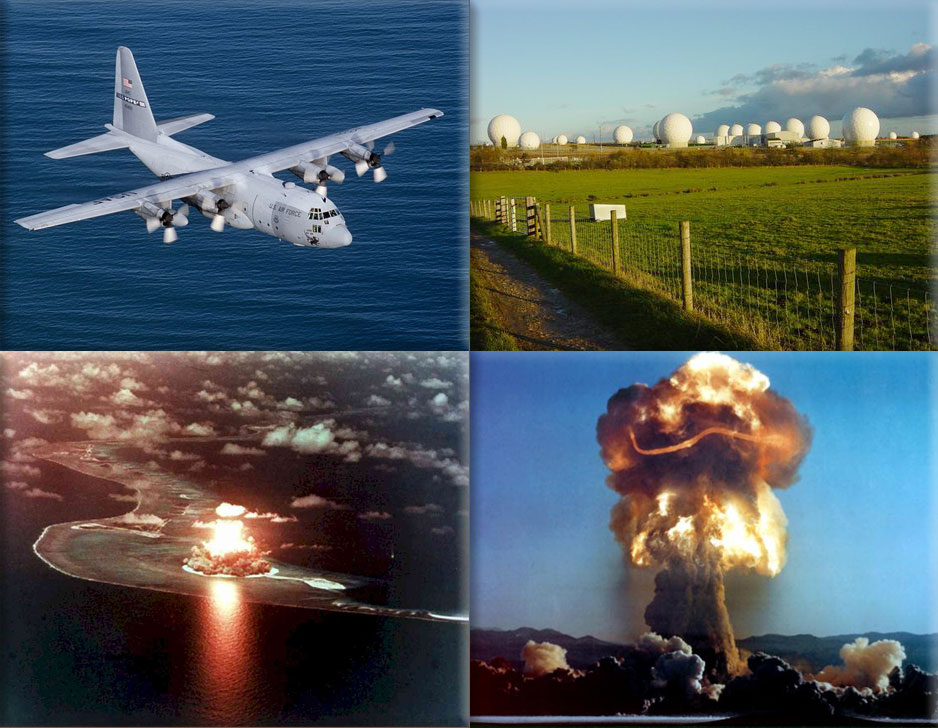
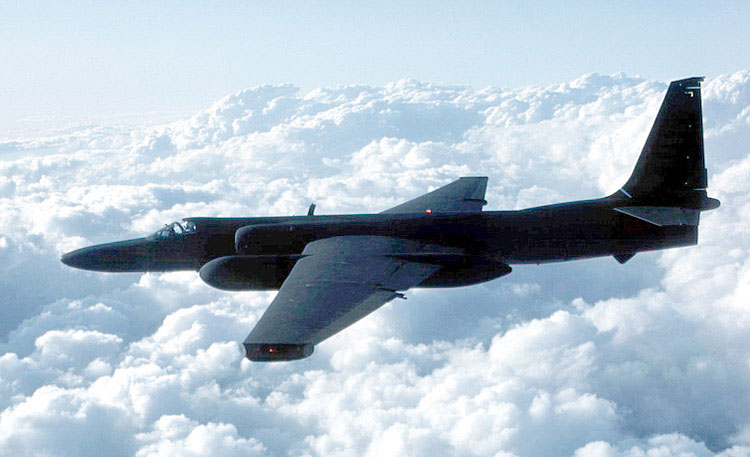

Cold War:
1946 - The United States State Department releases the Acheson–Lilienthal Report, outlining a plan for the international control of nuclear power.
Wikipedia Photo: Lockheed C-130 Hercules; RAF Menwith Hill, a large site in the United Kingdom, part of ECHELON and the UKUSA Agreement; New Zealand nuclear test, British nuclear tests near the Malden and Christmas Islands in the mid-Pacific in 1957 and 1958; Nevada nuclear tests, Nevada Division of Environmental Protection Bureau of Federal Facilities.
U2, Lockheed TR-1 in flight.
March 28th, 1951


Vietnam War:
1951 - First Indochina War; Battle of Mao Khe; - French Union forces, led by World War II hero Jean de Lattre de Tassigny, inflict a defeat on Việt Minh forces commanded by General Võ Nguyên Giáp.
Wikipedia Photo: Vietnam_War; Side view of an HH-53 helicopter of the 40th Aerospace Rescue and Recovery Squadron as seen from the gunner's position on an A-1 of the 21st Specialist Operations Squadron. (USAF Photo by Ken Hackman), Boston Globe;
Boeing B-52 Stratofortress, credit Free Republic;
Vietnam War: The Big Picture / Boston Globe.
March 28th, 1959

Tibet:
1959 - The State Council of the People's Republic of China dissolves the Government of Tibet.
Wikipedia Photo: Simonos Petras Monastery, credit Travis Dove, National Geographic ● Tibet - Heinrich Harrer, National Geographic ● Tibet - Two yaks, wispy clouds and the grand vista of the Tibetan Plateau, credit Felix Torkar. © 2011 National Geographic ● Tibetan People.
March 28th, 1978

1978 - The Supreme Court of the United States hands down 5-3 decision in Stump v. Sparkman 435 U.S. 349, a controversial case involving involuntary sterilization and judicial immunity.
Wikipedia Photo: United States Supreme Court building; Guardian of Law, by James Earle Fraser, US Supreme Court, Washington, DC, USA.
March 28th, 1979
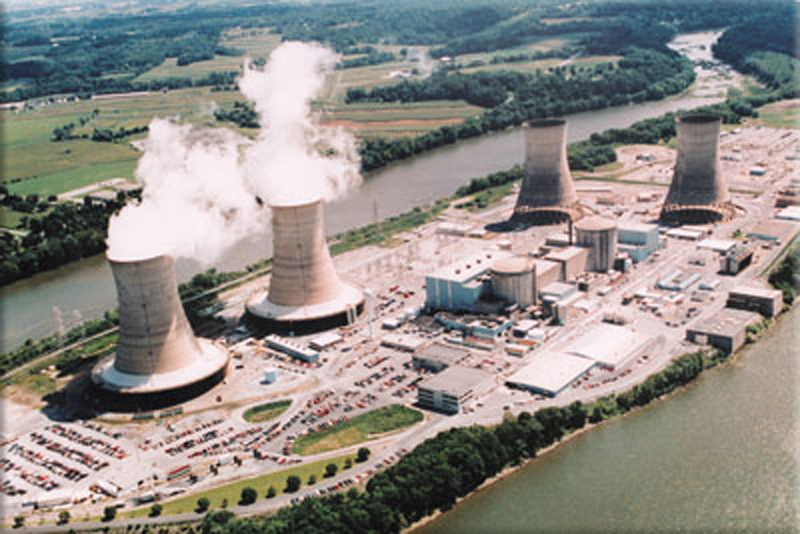
Operators of Three Mile Island's Unit 2 nuclear reactor outside of Harrisburg, Pennsylvania fail to recognize that a relief valve in the primary coolant system has stuck open following an unexpected shutdown. As a result, enough coolant drains out of the system to allow the core to overheat and partially melt down.
Wikipedia Photo: Three Mile Island outside of Harrisburg, Pennsylvania.
March 28th, 1990

United States President George H. W. Bush posthumously awards Jesse Owens the Congressional Gold Medal.
Wikipedia Photo: 1903; Orville Wright successfully makes a flight in a heavier-than-air machine that takes off from level ground under its own power and is controlled during flight. He flies the first airplane.
March 28th, 1994
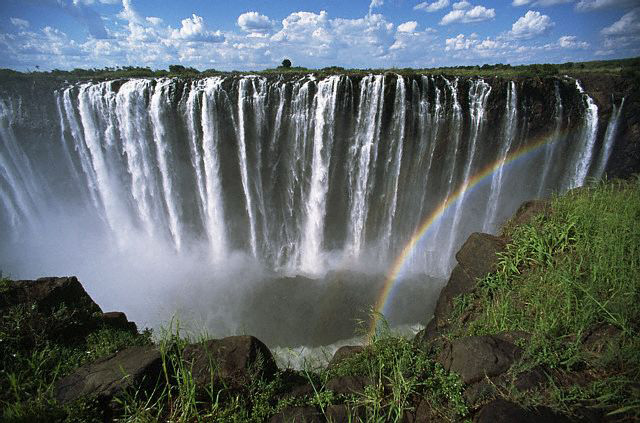

Anglo-Zulu War:
1994 - In South Africa, Zulus and African National Congress supporters battle in central Johannesburg, resulting in 18 deaths.
Wikipedia Photo: Zambia Victoria Falls, Zimbabwe;
A n'anga (or faith healer) of the majority (70%) Shona people, holding a kudu horn trumpet; Matabele and Zulu warriors, traditions continue to this day in ceremonies for special events.
March 28th, 1999

Yugoslav Wars, Kosovo War:
1999 - Izbica massacre; Serb paramilitary and military forces kill 146 Kosovo Albanians.
Wikipedia Photo: ● Belgrade burning after NATO air raid (Ušće Tower building in the moments after bombing) ● U.S. F-117 Nighthawk taxis to the runway before taking off from Aviano Air Base, Italy, on March 24, 1999 ● USAF F-15E taking off from Aviano Air Base ● A Tomahawk cruise missile launches from the aft missile deck of the USS Gonzalez on March 31, 1999 ● Kosovar refugees.
March 28th, 2003
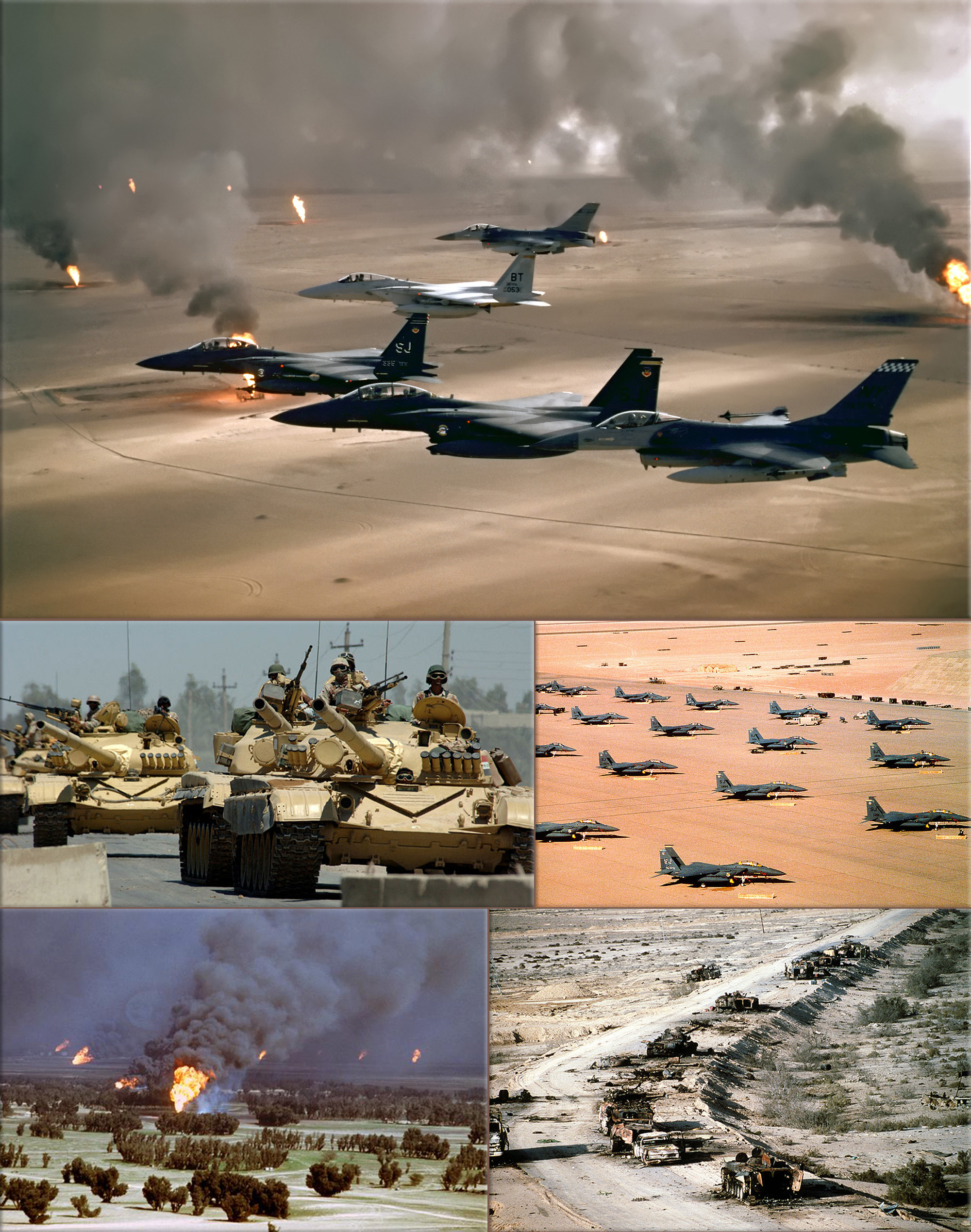
Gulf War - Iraq War:
2003 - In a friendly fire incident, two A-10 Thunderbolt II attack aircraft from the United States Idaho Air National Guard 190th Fighter Squadron attack British tanks participating in the 2003 invasion of Iraq, killing British soldier Matty Hull.
Wikipedia Photo: USAF F-15Es, F-16s, and a USAF F-15 flying over burning Kuwaiti oil wells; Iraqi Army T-72 main battle tanks. The T-72 tank was a common Iraqi battle tank used in the Gulf War; F-15Es parked during Operation Desert Shield; The oil fires caused were a result of the scorched earth policy of Iraqi military forces retreating from Kuwait; Aerial view of destroyed Iraqi T-72 tank, BMP-1 and Type 63 armored personnel carriers and trucks on Highway 8 in March 1991.
March 28th, 2005

Earthquake:
2005 - Nias–Simeulue earthquake; An earthquake shakes northern Sumatra at magnitude 8.7, ;eaving 915 – 1,314 people dead and 340 – 1,146 injured.
1970 - Gediz earthquake; A 7.2 magnitude earthquake strikes western Turkey, killing 1,086 and injured 1,260.
Wikipedia Image: Preliminary Determination of Epicenters / Aleppo Syria; Anchorage, Alaska - March 28, 1964 Prince William Sound USA earthquake and tsunami; 8.9 Mega Earthquake Strikes Japan; Tsunami Swirls Japan's Ibaraki Prefecture March 12 2011. credit NOAA / NGDC, NOAA National Geophysical Data Center, USGS, National Geographics.
March 28th, 2006
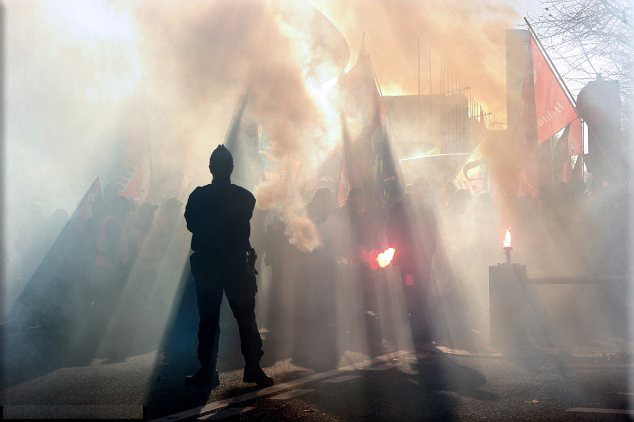
At least 1 million union members, students, and unemployed take to the streets in France in protest at the government's proposed First Employment Contract law.
Wikipedia Photo: FRANCE; A police officer watches a man brandishing a flare during an anti-austerity protest in Lille in northern France. AFP Getty Images, Boston Gobe - The Big Picture.
